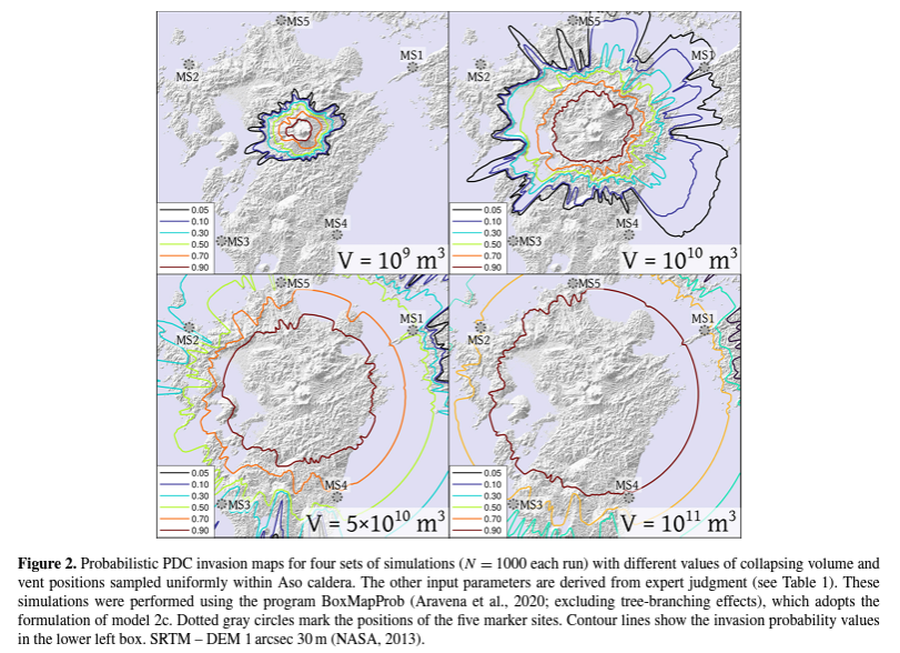Probabilistic PDC invasion maps for four sets of simulations (N = 1000 each run) with different values of collapsing volume and vent positions sampled uniformly within Aso caldera
Asosan, Japan, 2022
Figure 2 in: Bevilacqua, A., Aravena, A., Aspinall, W., Costa, A., Mahony, S., Neri, A., Sparks, S. & Hill, B. (2022). Assessing minimum pyroclastic density current mass to impact critical infrastructures: example from Aso caldera (Japan). Natural Hazards and Earth System Sciences, 22(10), 3329-3348.
This hazard map is the result of scientific research and was published in academic literature.
It is presented here to serve as an example of the map type or the map-making methodology. It is NOT the official, operational map. For the current operational hazard map, please consult the proper institutional authorities.

Click on image for full-size map.
Map Data
Map ID 4207 Hazard Process(es) PDCs Hazard Zone Presentation Single hazard: A single hazard process is represented on a series of small map panels of similar sizes Temporal Scale Background, or long-term, map Spatial Scale Volcano and surrounding area Publication Format Figure in a journal article Zonation Method(s) Probabilistic modeling Zonation Model(s) Branching kinetic box model (Aravena et al. 2020, 2022) Scenario(s) Considered Size, VEI, or intensity; Source location or direction Hazard Zone Label(s) Numeric probability Probability Definition(s) Numeric probability Purpose Scientific interest: Intended for scientific research and general scientific interest; usually published in academic journals Audience Scientists (usually in scientific publication) Language(s) English Basemap(s) Hillshade Basemap overlay(s) Diemsionality Planimetric (2D or map) view Color Scheme Rainbow
